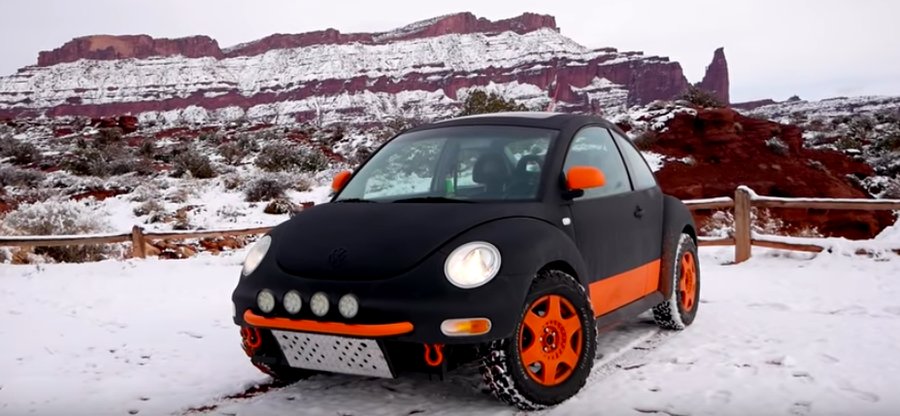The Beetle has few modifications, but they’re enough to give the illusion of off-road capability at least. Power still comes from the Beetle’s stock 2.0-liter, four-cylinder engine that makes 115 horsepower (85 kilowatts), routing through the four-speed automatic to the front wheels. The open differential doesn’t help the Beetle’s off-road chances, either.
The biggest upgrade is the VW lift kit that raises the car about two or three inches, though the 16-inch wheels and thick off-road tires fill the wheel well. The VW is covered with a spray-on bed liner for added protection, while the Magnaflow exhaust gives the little Bug a big sound.
The Beetle has other upgrades that enhance the Beetle’s visual appearance, but not much else. The suspension lift and knobby tires help, but so do the orange accents, off-road lights, and makeshift bumper guard. Inside, it appears the Beetle is all stock.
For all the Beetle’s modifications, the car still has reliability issues. For one, it’s nearly 20 years old, and aging cars are bound to have problems. The headliner is in poor condition, and the Magnaflow exhaust was a mandatory need, not a want. Then there’s the Beetle’s air breather located behind the front wheel, which has fed water into the intake, soaked an air filter, and killed the mass airflow sensor.
The VW Beetle may not be the first off-road vehicle to come to mind when setting out for an adventure, but it could do in a pinch with a few modifications. Though a tougher trail would have been disastrous for the VW.
Related News



